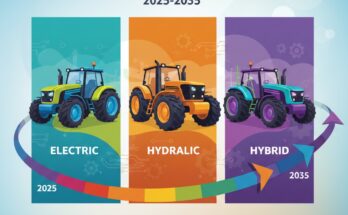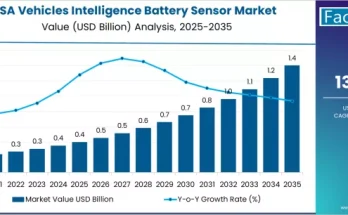As urbanization and eco-conscious mobility solutions gain momentum, the kick scooter market is witnessing significant growth. Kick scooters, including traditional, electric-assisted, and foldable variants, are becoming a preferred choice for short-distance commuting, recreational activities, and last-mile connectivity. Their convenience, affordability, and environmental benefits are driving adoption in cities worldwide, transforming urban transportation landscapes.
The growing emphasis on sustainable mobility, coupled with rising traffic congestion and the need for flexible transport options, has positioned kick scooters as a practical alternative to conventional modes of commuting. This trend highlights the market’s potential to reshape personal and shared urban transport solutions in the coming years.
Market Overview
The kick scooter market encompasses a wide range of products designed for urban mobility, leisure, and recreational use. Modern kick scooters are lightweight, durable, and often equipped with features that enhance safety and convenience, including adjustable handlebars, foldable frames, shock absorption systems, and electric-assisted propulsion.
Urban commuters increasingly rely on kick scooters for short trips, particularly for connecting to public transit, reducing travel time, and avoiding congested roads. Beyond transportation, kick scooters have become popular in recreational and fitness segments, providing a fun, low-impact activity for children and adults alike.
The rise of shared mobility services has further accelerated market growth. App-based scooter-sharing platforms provide users with convenient, eco-friendly options for short trips, reducing dependence on cars and contributing to greener cities. Technological advancements, including battery improvements and IoT-enabled scooters, are enhancing usability, safety, and operational efficiency, fostering wider adoption.
Regional Insights
The kick scooter market demonstrates diverse adoption patterns across global regions:
North America leads in market development, driven by the popularity of urban micromobility solutions, rising environmental awareness, and strong investment in shared mobility infrastructure. Major cities are implementing dedicated lanes, parking zones, and safety regulations to accommodate scooters, making them a convenient and attractive transportation option.
Europe is a key market for kick scooters, especially in cities prioritizing sustainability and congestion reduction. Countries with well-developed urban infrastructure, strong public transportation networks, and supportive policies are witnessing widespread adoption of both personal and shared scooters. European cities emphasize pedestrian safety, sustainable urban design, and eco-friendly commuting, which aligns with the growth of kick scooters.
Asia-Pacific is emerging as a rapidly growing market due to increasing urban population, demand for affordable mobility solutions, and rising adoption of electric scooters. Government initiatives promoting clean transportation, coupled with technological advancements and growing interest in personal mobility devices, are fueling market expansion.
Other regions, including Latin America and the Middle East & Africa, are gradually adopting kick scooters as urban mobility solutions gain recognition. Initiatives to improve transportation infrastructure and the rising popularity of shared mobility services are driving interest in these regions.
Key Trends & Forecast
The kick scooter market is being shaped by several important trends that influence consumer adoption, technology development, and regulatory practices:
- Electric and Hybrid Scooters: Electric-assisted kick scooters are gaining traction due to their enhanced convenience, speed, and ability to cover longer distances with less physical effort.
- Shared Micromobility Services: App-based rental platforms are expanding in urban areas, allowing users to access scooters on-demand, reducing the need for personal ownership.
- Lightweight and Foldable Designs: Portability and ease of storage are critical for urban commuters, making foldable kick scooters increasingly popular among consumers.
- Technological Enhancements: IoT integration, GPS tracking, smart locking systems, and battery management innovations are improving safety, usability, and fleet management.
- Safety and Regulatory Measures: Governments and city planners are implementing safety standards, designated lanes, and parking guidelines to encourage responsible scooter use.
- Sustainability Focus: Kick scooters offer an eco-friendly alternative to motorized vehicles, aligning with global initiatives to reduce carbon emissions and promote greener cities.
These trends collectively indicate a shift toward smart, connected, and environmentally sustainable personal mobility solutions that cater to evolving urban lifestyles.
Applications & End-Use Outlook
Kick scooters find applications across several key areas, reflecting their versatility and growing relevance:
- Urban Commuting: They provide efficient last-mile connectivity, allowing commuters to navigate congested streets, access public transit hubs, and reduce travel time.
- Recreational and Leisure Use: Scooters are popular among children, teenagers, and adults for fun, exercise, and outdoor activities in parks, campuses, and residential areas.
- Shared Mobility Services: Ride-hailing and rental platforms utilize scooters for short-distance travel in metropolitan areas, supporting sustainable transportation and reducing car dependency.
- Tourism and Hospitality: Kick scooters are increasingly offered in resorts, tourist spots, and urban tours to enhance visitor experiences while promoting eco-friendly mobility.
- Corporate and Campus Transport: Organizations and educational institutions are adopting scooters to facilitate on-campus mobility, improve efficiency, and reduce parking demand.
The growing integration of kick scooters in daily life demonstrates their potential to redefine urban mobility, offering practical, fun, and sustainable transportation options across various settings.
Conclusion
The kick scooter market is poised to play a pivotal role in the evolution of urban mobility, offering eco-friendly, convenient, and versatile transportation solutions. The adoption of electric-assisted and foldable scooters, coupled with technological advancements and shared mobility services, is driving market growth while contributing to greener cities and sustainable commuting practices.
As urbanization continues and consumer preference shifts toward sustainable and efficient transport, kick scooters will increasingly become a key component of personal and shared mobility ecosystems. For manufacturers, service providers, and city planners, understanding market trends, technological innovations, and regulatory developments is essential to harness the full potential of this dynamic and growing market.
Kick scooters are more than just a mode of transport—they represent the future of convenient, sustainable, and enjoyable urban mobility, transforming how people move within cities and redefining the landscape of modern transportation.
Browse Full Report – https://www.factmr.com/report/kick-scooter-market



